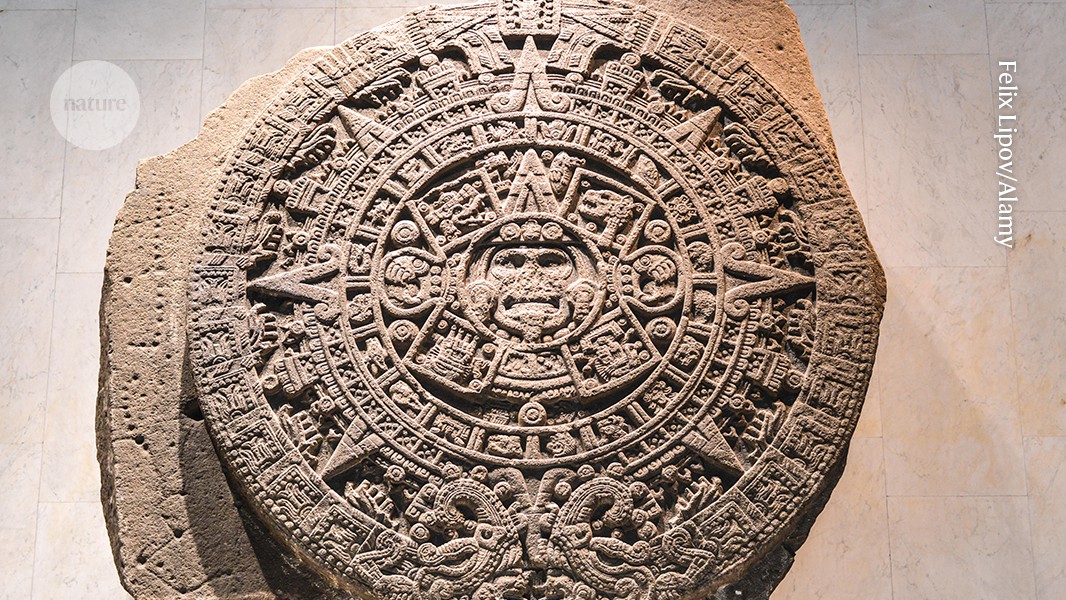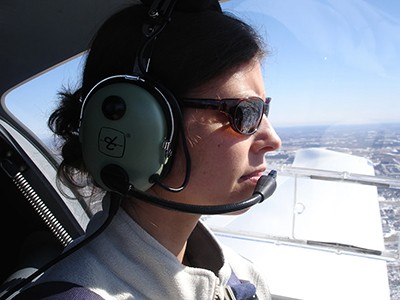Mapping the Infinite Los Angeles County Museum of Art, California 20 October 2024–2 March 2025
Rising Signs Getty Center, Los Angeles 1 October 2024–5 January 2025
Pacific Standard Universe Griffith Observatory, California Showing now until 2030
Island Universe Los Angeles County Museum of Art, California 12 September 2024–ongoing
It looks so humdrum — a smear of black on a grey glass plate. Yet this negative, taken by US astronomer Edwin Hubble in 1923, highlighting a star in the Andromeda spiral galaxy, radically altered our perceptions of the cosmos by proving the existence of galaxies beyond the Milky Way.
This truly “cosmic work”, as the exhibition’s curator Stephen Little refers to it, is one highlight of the exhibition Mapping the Infinite, which opened in October at the Los Angeles County Museum of Art (LACMA) in California, and runs until March 2025.
Cosmologist Claudia de Rham on falling for gravity
Cosmology is one of many themes at the intersection of science and art being explored over the next five months in more than 70 exhibitions and events across southern California. Sponsored by the Getty Foundation in Los Angeles, the PST ART: Art & Science Collide festival also covers topics such as climate change, Indigenous knowledge and artificial intelligence.
Mapping the Infinite traces the varied ways that humans have, from the Stone Age to the modern era, depicted and interpreted the heavens. Amid a deep-blue backdrop, visitors can view stone artefacts, ancient maps of stars and historical texts that show how diverse cultures have perceived space and time.
For example, there’s one striking ink rubbing that was created from a thirteenth-century Song Dynasty engraving on a stele at the Confucian Temple of Suzhou in China. It was the most advanced star chart of its time, and depicts 1,436 stars set amid concentric circles, plus the Milky Way and the constellations that the Moon passes through each month. Elsewhere, a modern watercolour painting of the Milky Way shows how South America’s Inca defined constellations not just with bright stars, but also with the dark patches in between.
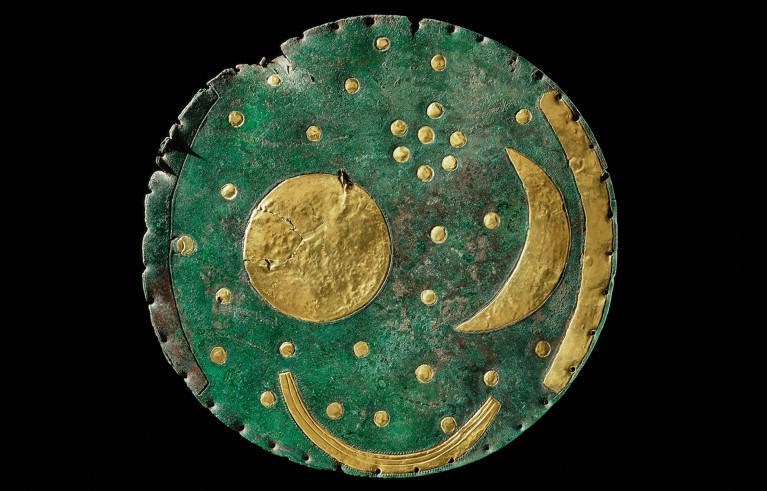
The Nebra Sky Disc, one of the earliest depictions of the night sky, from around 1600 bc in Germany.Credit: LDA Sachsen-Anhalt, Juraj Lipták
Links between cultures are apparent. For example, a seventeenth-century celestial globe from the Netherlands illustrates the constellations with their names in Latin, Greek and Arabic — revealing the influence of Islamic astronomy. The concept of multiple universes is widespread. For example, the twelfth-century Persian astronomer Fakhr al-Din al-Razi proposed an infinite number of universes. It also shows up in Hindu and Buddhist objects, including an eleventh-century carved sandstone panel from India showing the god Brahma rising from the navel of the god Vishnu before creating the next universe.
Astrological tips
Those curious to learn more about Middle Age impressions of the heavens can also swing by Rising Signs at the Getty Center in Los Angeles, which runs until 5 January 2025. Using centuries-old manuscripts, this small but illuminating exhibit shows how people have relied on astrology to guide their daily lives, particularly in medical treatment. For example, a person’s zodiac sign and the time of year would guide the best body part to open a vein for bloodletting. “This was part of your average doctor’s visit,” says Larisa Grollemond, the curator of the exhibition.
Visitors can identify their medieval sign — which was determined by month of birth — and look up the appropriate medieval advice on a screen. For example, a November-born Sagittarius, of a fiery, choleric temperament owing to an excess of yellow bile, should eat cooling foods such as cucumbers and lettuce, but avoid garlic and onions. For that month, astrologers would have recommended activities such as bathing and gathering acorns for pigs.
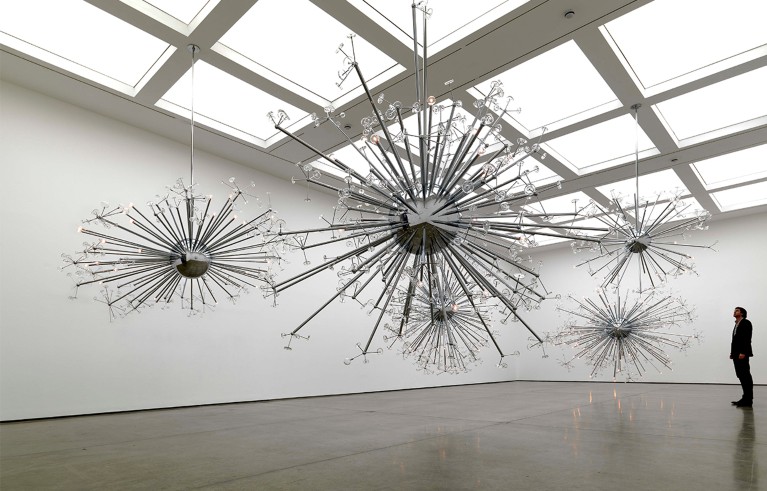
Island Universe, by US artist Josiah McElheny, represents our Universe and four variants.Credit: Todd White Art Photography, courtesy White Cube
Circles are a common motif in both Rising Signs and Mapping the Infinite. Representations of the cosmic order, or cosmograms, are often circular, to reflect the surrounding horizon or a culture’s belief in a cyclical nature of time, explains Ed Krupp, director of the Griffith Observatory in Los Angeles. Many cultures also set their architecture around the four points of the compass to signify cosmic connections.
Humankind’s evolving perceptions of the cosmos is the theme of the Griffith Observatory’s contribution to PST ART: a charming 35-minute animated film called Pacific Standard Universe, which shows cosmograms from around the world. For example, in a Californian cave, the Chumash painted the ‘sky coyote’, represented by the North Star. The Aztecs’ circular stone cosmogram remains popular in Mexican culture today, although it’s often inaccurately described as a calendar. And Beijing’s Forbidden City is itself a cosmogram, organized around a north–south axis to connect the emperor to the celestial deity at the north-pole point in the sky.
Evolving ideas
The film also highlights how cosmologies evolve. In the sixteenth century, Polish astronomer Nicolaus Copernicus put the Sun at the centre of the cosmos, displacing Earth. A century later, German astronomer Johannes Kepler flattened the Solar System and defined planets’ elliptical orbits.
Hubble’s discoveries in the 1920s went further. At Mount Wilson Observatory in Los Angeles County, he established the distances to stars in the Andromeda galaxy, showing that they lay well beyond the Milky Way. Cosmologists now know that there are billions, maybe even trillions of galaxies out there.
Hubble also showed that the Universe is expanding. Rather than repeating cycles, the Universe seems to be ever-growing, ever-changing, without end. His discoveries “turned the Universe into something different — and image, symbol and art, took a sharp turn to infinity and beyond”, says Krupp.
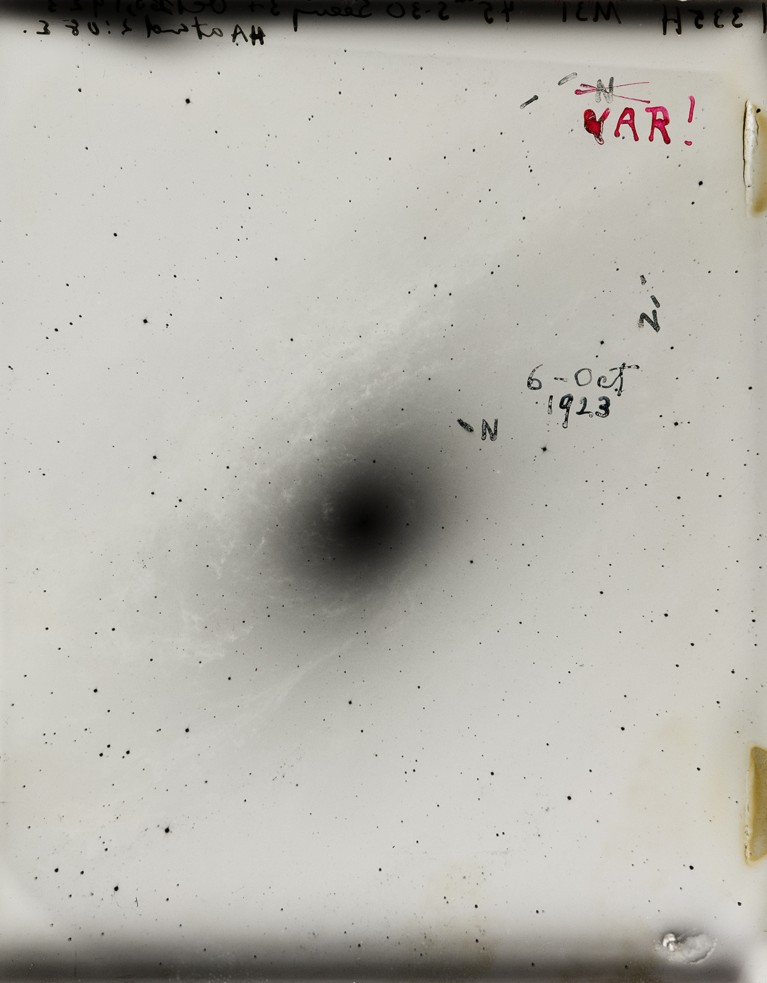
Edwin Hubble’s annotated plate of the Andromeda galaxy.Credit: Courtesy of Carnegie Science
Back at LACMA, Mapping the Infinite finishes with an exploration of modern cosmology, including Hubble’s famous negative, on loan from the Carnegie Observatories in Pasadena, California. Other cosmograms of the modern age include US astronomer Percival Lowell’s diagram of what he thought were canals on Mars and a 2023 telescope image showing radio emissions from regions of forming and exploded stars in the heart of the Milky Way.
A chandelier-like art installation offers an interpretation of multiverse theory and potential universes that have physics different from our own. Island Universe, by US artist Josiah McElheny, was created in collaboration with David Weinberg, a cosmologist at Ohio State University in Columbus. It comprises five sculptures, each a silver sphere from which hundreds of rods sprout in all directions. The rods are tipped with disks, globes or light bulbs to represent various sorts of galaxies and how each universe develops over time.
As these fascinating exhibitions highlight, all of these cosmologies view the same Universe from different angles. And there’s still room for those angles to evolve. “All cosmologies are temporary,” Little says. “I hope people leave the show curious.”


